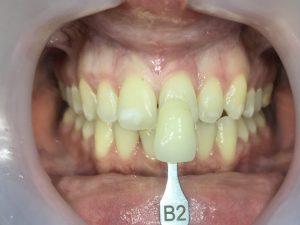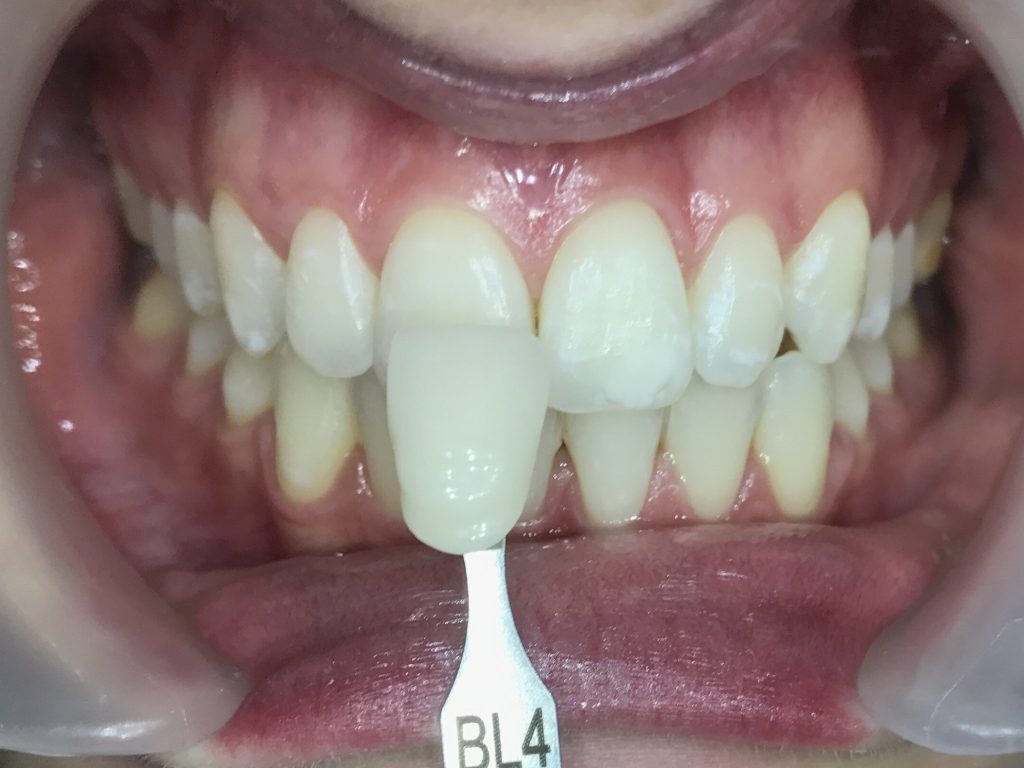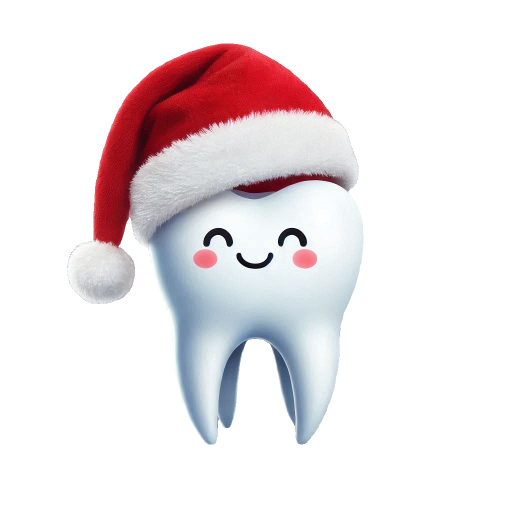Known as dental bleaching or whitening, the procedure is more of an aesthetic-cosmetic treatment than a dental-medical one. Patients can find many variations of it on the market. Without going deeply into this topic, I would like to give further information about the bleaching process and its effects. This information that we always tell the patients before treatment begins.
We do two types of bleaching. The first one, called home-whitening, is when a patient buys the whitening material and uses it at home using various processes. The processes referred to here cover a broad spectrum from the cheap “lighting in the mouth” to the use of a tray made individually for the patient and filled for a certain period with whitening material.
A dental-hygenist or dentist does the second type of whitening method in the clinic, approximately 1,5 hours. The bleaching material is lighted 3-4 times with a high-quality lamp. The dentist or dental assistant closely monitors the entire process.
Viszont a reklámokkal ellentétben a fehérítés mértéke egyáltalán nem megjósolható, mint ahogy az sem, hogy mennyire lesz tartós. Az biztos, hogy a világosodást el lehet érni, DE!
BUT! I want to clarify that our result using this process is not always the same as we can see in the promotions. The level of the lightening depends on many factors, such as the original color and shade of the teeth, where yellowish teeth get lighter easier than grayish-colored teeth. Other important factors affecting the permanency of the change depending on the patient’s habits like smoking, drinking coffee, or exhibiting or not exhibiting other discoloration practices.
The pictures above show the before-after color of teeth of a patient who has had a whitening treatment. This was a best-case scenario as the patient only had yellowish discoloration and no habits causing discoloration. The second picture was taken after a month, and the color remained completely unchanged – which is ideal.
One other thing may be said. During and after the bleaching process, the teeth are sensitive for a few days, which can be uncomfortable for patients. But, the enamel of the teeth is not damaged, and some easy and practical methods can be used to reduce both the level of pain and the period of recovery.




